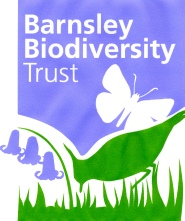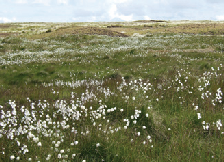



Nationally or statutory designated sites.
Barnsley’s rich and diverse countryside includes areas of particular importance for wildlife. There are sites in Barnsley that have important, distinctive and threatened habitats and species.
Some sites are recognised nationally and given legal protection. Others have been identified as having local significance.


South Pennine Moors - partly in Barnsley - are designated as a European Special Area of Conservation (SAC) for their extensive tracts of moorland habitats including upland heath and blanket mire.
South Pennine Moors are also designated as a European Special Protection Area (SPA) for upland breeding birds including Dunlin, Golden Plover, Merlin and Short-eared Owl.
These moors are also given the status of the Dark Peak Site of Special Scientific Interest (SSSI). Other SSSIs in Barnsley include Pye Flatts Meadows and Spring Meadows, Alderman’s and Cox Croft Meadows.
All of these are given special legal protection as a result of their status, as well as conditions being set for their conservation management.
Other sites in Barnsley may warrant SSSI status - for example Dearne Valley washlands.
Please note that there is no public right of entry to any site as a result of its designation without the permission of the landowner.

Pye Flatts Meadows SSSI near Silkstone and Hoylandswaine, consists of three fields of neutral hay-meadow grassland. Diverse grasses and flowering plant species suggest they are a product of traditional grassland management. Access
At Spring Meadows, Alderman’s Head and Cox Croft Meadows SSSI, near Penistone, eleven fields have also been traditionally managed for hay crop with late summer mowing.
Pye Flatts Meadow: Granville Danny Clarke FRSA
Nationally designated sites: Special Protection Areas, Special Areas of Conservation, and Sites of Special Scientific Interest.
Nationally designated sites have legal protection and requirements for their conservation.
This is set out in the Wildlife & Countryside Act 1981, Country-side and Rights of Way Act 2000 and Conservation of Habitats and Species Regulations 2010. More.
Special Areas of Protection (SPAs) are designated under the EU Birds Directive
SPAs are areas of the most important habitat for certain particularly threatened and/or migratory birds within the EU.
Special Areas of Conservation (SACs) are designated under the EU Habitats Directive.
SACs contain the most important habitats within the EU or supporting certain threatened species other than birds.
SACs and SPAs are also known as Natura 2000 sites.
Sites of Special Scientific Interest (SSSIs) are nationally recognised sites.
Natural England is responsible for notifying SSSIs, ensuring they are managed appropriately and assessing and monitoring their condition.
The best examples of each special habitat are identified for SSSI status in each national character area; all examples may be included for rarer habitats
Sites of particular significance for different wildlife groups may be selected (eg birds, dragonflies, butterflies, amphibians, etc.)
Each habitat or group of species has its selection criteria.
Defra: Protected sites guidance
Defra: SSSI selection guidelines
Map to follow